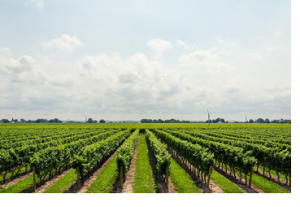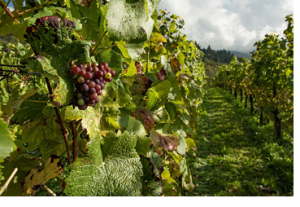The grapevine microbiome survey
Coordinators: Dr Raúl Ochoa-Hueso and Dr Manuel Delgado-Baquerizo
Vineyards are part of the trinity of perennial crops in regions with a Mediterranean climate such as those in southwest Europe, California, South Africa, Chile and South and Western Australia, where they cover a large portion of land and represent an important source of income for the local economies.
 Traditionally, vineyards, particularly those in Europe, harbored great biodiversity at all taxonomic levels, including plants, animals and soil organisms due to the coevolution of men and vineyard ecosystems across millennia. However, the intensification of viticulture and the excessive use of the plow and fertilizers and pesticides has resulted in currently highly eroded and biologically impoverished vineyards that are ever-increasing their demands of agrochemicals, with the associated negative consequences for growers. Moreover, the economic pressure imposed on growers and winemakers due to competition with emerging markets in new wine regions and intermediaries, which contribute to lower the price of raw and processed materials, poses a key challenge of how to simultaneously restore biodiversity and ecosystem function while increasing the margin of benefits for growers. Restoring the biodiversity and soils of these vineyards is thus a pressing economic and cultural need for global wine regions, yet coordinated global efforts towards this goal are lacking.
Traditionally, vineyards, particularly those in Europe, harbored great biodiversity at all taxonomic levels, including plants, animals and soil organisms due to the coevolution of men and vineyard ecosystems across millennia. However, the intensification of viticulture and the excessive use of the plow and fertilizers and pesticides has resulted in currently highly eroded and biologically impoverished vineyards that are ever-increasing their demands of agrochemicals, with the associated negative consequences for growers. Moreover, the economic pressure imposed on growers and winemakers due to competition with emerging markets in new wine regions and intermediaries, which contribute to lower the price of raw and processed materials, poses a key challenge of how to simultaneously restore biodiversity and ecosystem function while increasing the margin of benefits for growers. Restoring the biodiversity and soils of these vineyards is thus a pressing economic and cultural need for global wine regions, yet coordinated global efforts towards this goal are lacking.
 One first necessary step towards restoring the biodiversity and functioning of vineyards would require the characterization of the invertebrate and microbial communities that live in intimate contact with the vines (i.e., the core grapevine microbiome) at both global and regional scales. Thus, characterizing the core grapevine microbiome associated with roots and leaves will be the main goal of the GRAPEVINE MICROBIOME survey. This will be done in close collaboration with the CROP MICROBIOME survey, which is coordinating the collection of soils from five types of croplands (rice, wheat, cotton, corn and potato) worldwide (https://www.globalsustainableagriculture.org/). At the GRAPEVINE MICROBIOME survey, we aim to establish a global collaborative network that will allow us to identify (1) a list of species of bacteria, fungi and micro-fauna; and (2) functional attributes characterizing the grapevine microbiome worldwide.
One first necessary step towards restoring the biodiversity and functioning of vineyards would require the characterization of the invertebrate and microbial communities that live in intimate contact with the vines (i.e., the core grapevine microbiome) at both global and regional scales. Thus, characterizing the core grapevine microbiome associated with roots and leaves will be the main goal of the GRAPEVINE MICROBIOME survey. This will be done in close collaboration with the CROP MICROBIOME survey, which is coordinating the collection of soils from five types of croplands (rice, wheat, cotton, corn and potato) worldwide (https://www.globalsustainableagriculture.org/). At the GRAPEVINE MICROBIOME survey, we aim to establish a global collaborative network that will allow us to identify (1) a list of species of bacteria, fungi and micro-fauna; and (2) functional attributes characterizing the grapevine microbiome worldwide.
